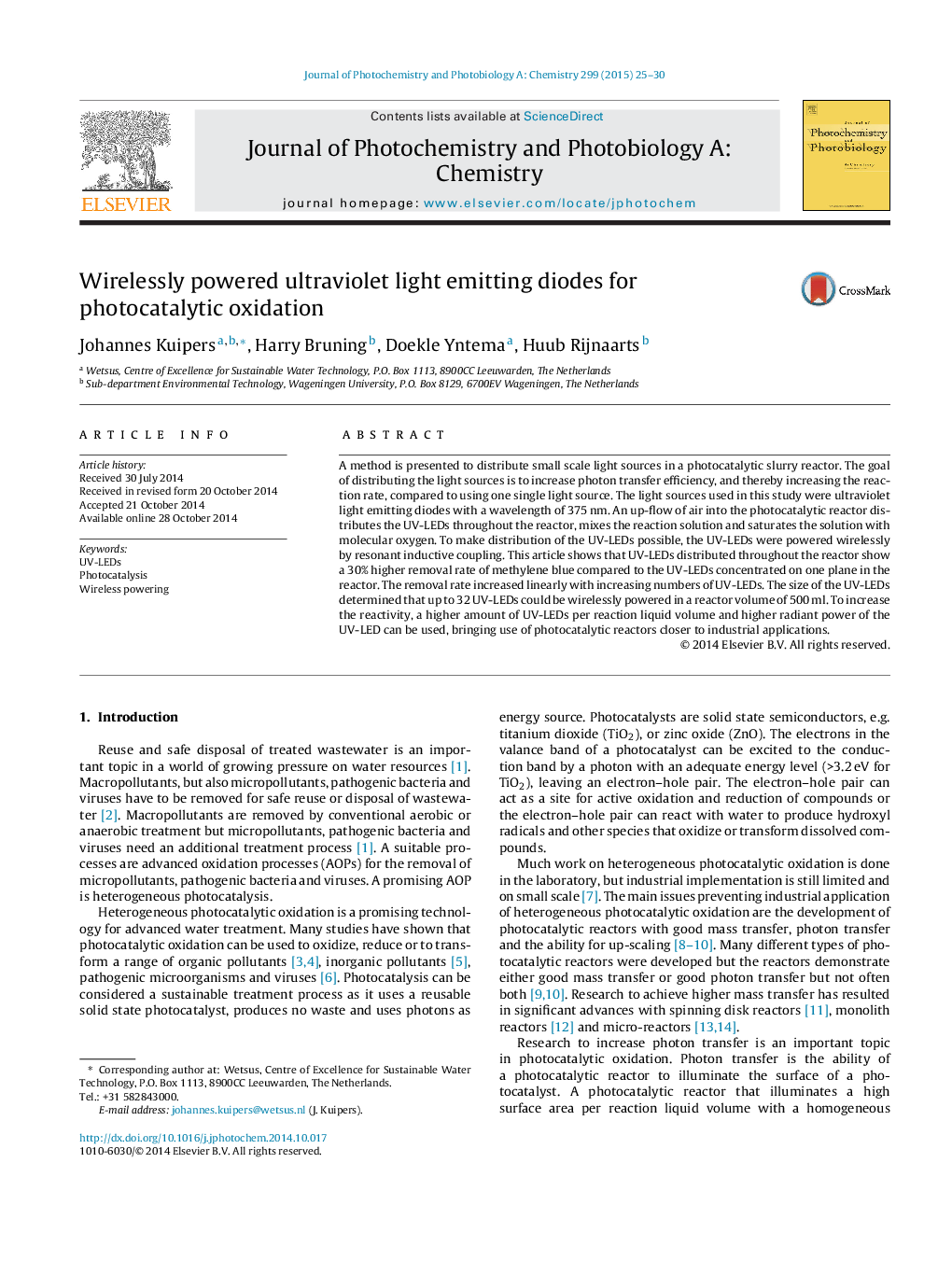| Article ID | Journal | Published Year | Pages | File Type |
|---|---|---|---|---|
| 26389 | Journal of Photochemistry and Photobiology A: Chemistry | 2015 | 6 Pages |
•We show wirelessly powered ultraviolet light emitting diodes (UV-LEDs).•They are applied in a photocatalytic reactor resulting in distributed light sources.•Distributed UV-LEDs show a factor 1.5 higher rate compared to concentrated UV-LEDs.•A promising method to efficiently irradiate a large catalyst surface >32,000 m2/m3.•We show that wirelessly powered UV-LEDs are promising for photocatalytic oxidation.
A method is presented to distribute small scale light sources in a photocatalytic slurry reactor. The goal of distributing the light sources is to increase photon transfer efficiency, and thereby increasing the reaction rate, compared to using one single light source. The light sources used in this study were ultraviolet light emitting diodes with a wavelength of 375 nm. An up-flow of air into the photocatalytic reactor distributes the UV-LEDs throughout the reactor, mixes the reaction solution and saturates the solution with molecular oxygen. To make distribution of the UV-LEDs possible, the UV-LEDs were powered wirelessly by resonant inductive coupling. This article shows that UV-LEDs distributed throughout the reactor show a 30% higher removal rate of methylene blue compared to the UV-LEDs concentrated on one plane in the reactor. The removal rate increased linearly with increasing numbers of UV-LEDs. The size of the UV-LEDs determined that up to 32 UV-LEDs could be wirelessly powered in a reactor volume of 500 ml. To increase the reactivity, a higher amount of UV-LEDs per reaction liquid volume and higher radiant power of the UV-LED can be used, bringing use of photocatalytic reactors closer to industrial applications.
